4 Simple Exercises That Build More Muscle Than Weight Training After 50
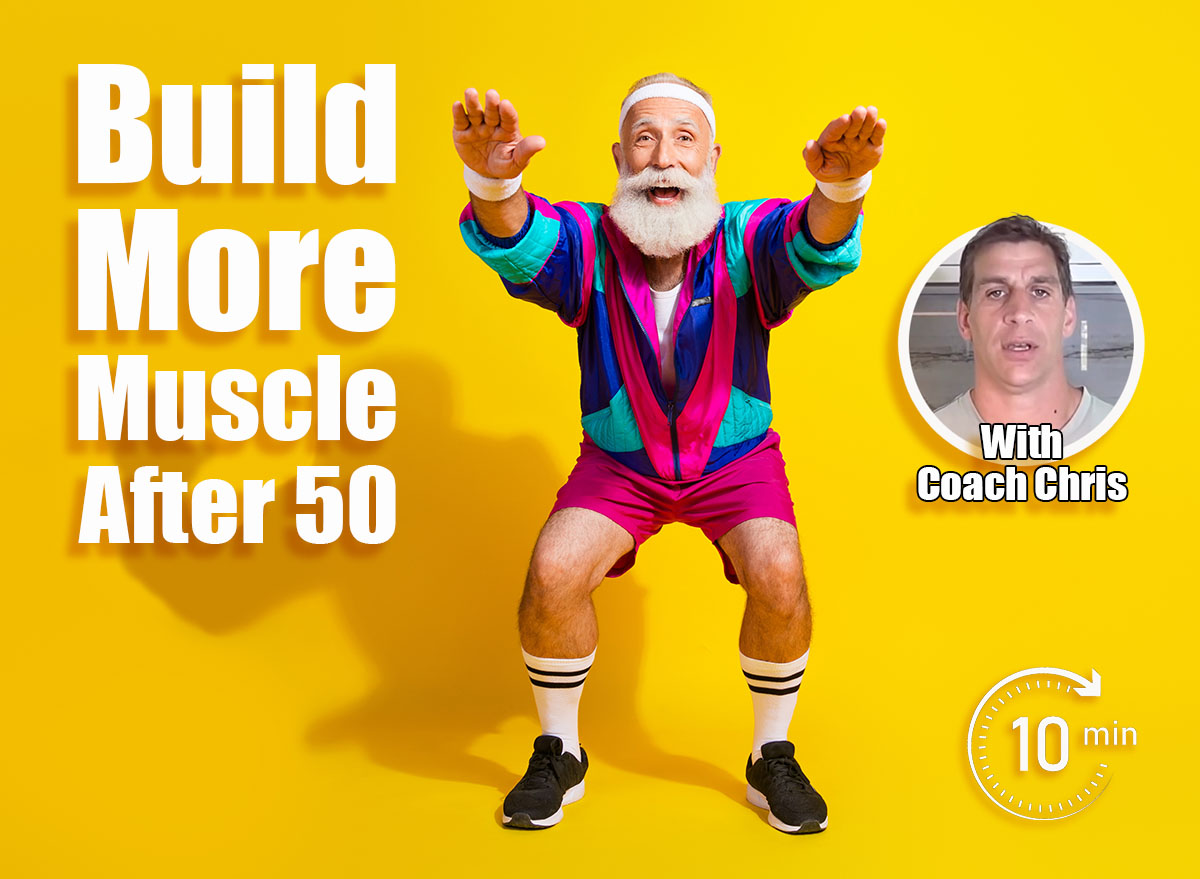
When it comes to building muscle, most people picture gyms jam-packed with complex machines, barbells, and bodybuilders lifting Herculean weights. But while traditional weight training can be highly effective, it’s not the only path to getting stronger and building muscle, especially after 50.
For beginners or those wanting to protect their joint health (e.g., older adults), bodyweight and low-impact functional exercises are a far safer and better option. These moves can help build strength, stability, and muscle mass without the strain that often comes with heavier lifting. A 2023 review in Frontiers in Physiology found that bodyweight exercises and functional training can still stimulate muscle growth and improve functional ability in older adults.
Maintaining muscle is critical as you age. According to Harvard Health, the natural loss of muscle mass, called sarcopenia, can start in your 30s and accelerate after 50, leading to decreased mobility, balance issues, and an increased risk of falls. Fortunately, research suggests regular strength training can help slow or reverse this decline, making it easier to stay active and independent.
To help you get started, we chatted with Chris Mohr, PhD, RD, fitness and nutrition advisor at BarBend, who shares four beginner-friendly exercises below that require no gym membership, no special equipment, and very little space. They target large muscle groups, improve balance and coordination, and can be adapted to any fitness level. Each comes with simple step-by-step instructions, the number of sets and reps, and tips for making the movement easier or more challenging.
Read on for the exercises, then be sure to check out If You Can Complete This 5-Move Sequence After 50, You’re Aging Backwards.
4 Simple Exercises to Build Muscle After 50
Bodyweight Squats
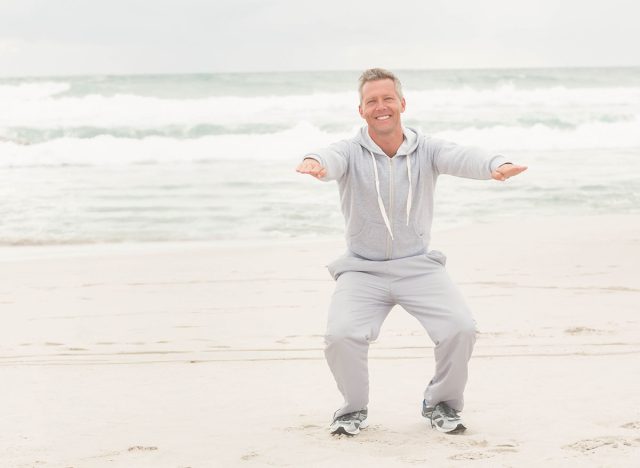
Squats are one of the most functional lower-body exercises as they target the quads, hamstrings, glutes, and core. Strong legs and hips help with everything from climbing stairs to getting up from a chair with ease.
“Stand with feet shoulder-width apart, then sit back like you’re going into a chair,” Mohr says. “Keep your chest up and knees in line with your toes. Push the weight through your heels to stand back up. This builds strength in your legs and hips, which are key for staying mobile.”
How to do it:
- Stand with your feet shoulder-width apart.
- Keep your chest upright and core engaged.
- Push your hips back and bend your knees, lowering into a seated position.
- Go as low as is comfortable, aiming for thighs parallel to the floor.
- Push through your heels to return to standing.
Sets & Reps: 3 sets of 10 to 15 reps.
Tip: Place a chair behind you if you need support or want to check your depth.
Wall Pushups
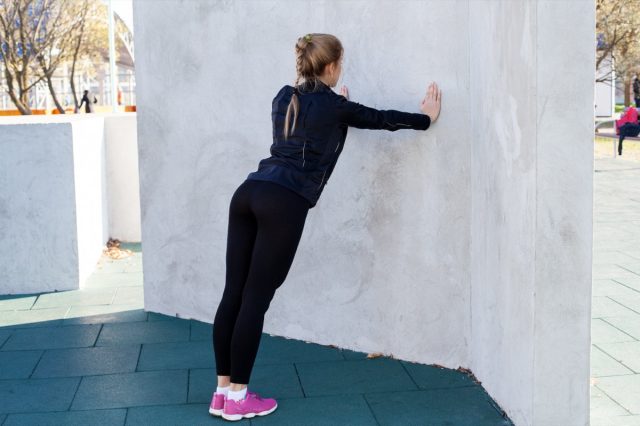
Wall push-ups are an excellent way to strengthen your upper body without putting as much pressure on the wrists and shoulders as traditional push-ups.
“Face a wall and place your hands at shoulder height,” Mohr explains. “Step back so your body’s at an angle, then lower your chest to the wall and push back. This works your chest, shoulders, and arms with less strain on the joints than floor push-ups. The lower your hands on the wall, the more challenging the pushup. It may help to use a kitchen counter or a piece of stable furniture as an option.”
How to do it:
- Stand facing a wall, feet hip-width apart.
- Place your hands flat on the wall at shoulder height, slightly wider than shoulder-width apart.
- Step your feet back so your body forms a straight line from head to heels.
- Bend your elbows and lower your chest toward the wall.
- Push through your palms to return to the starting position.
Sets & Reps: 3 sets of 10 to 12 reps.
Tip: Stand closer for an easier variation, or lower your hands for more challenge.
Glute Bridges
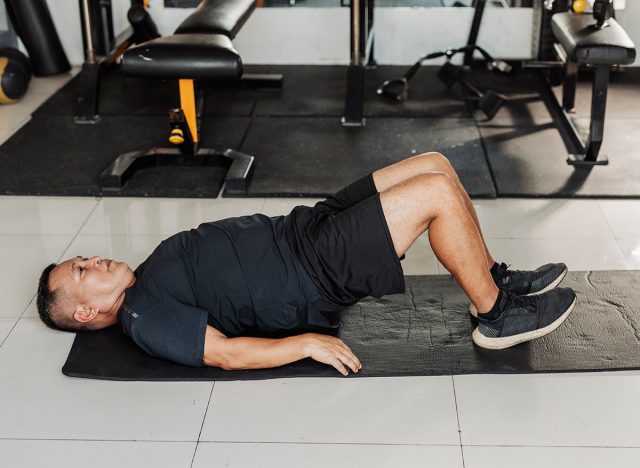
This simple move targets the posterior chain, which includes your glutes, hamstrings, and lower back muscles. According to a 2020 review, your posterior chain is critical for stability and walking mechanics.
“Lie on your back and bend your knees, then lift your hips until your body is straight. Lower down slowly. This strengthens your glutes and hamstrings, which support balance and posture,” says Mohr.
How to do it:
- Lie on your back with knees bent and feet flat on the floor, hip-width apart.
- Engage your core and press through your heels to lift your hips toward the ceiling.
- Squeeze your glutes at the top, ensuring your body forms a straight line from shoulders to knees.
- Lower your hips back down slowly.
Sets & Reps: 3 sets of 12 to 15 reps.
Tip: Place a small pillow or block between your knees to promote proper alignment.
Step-ups
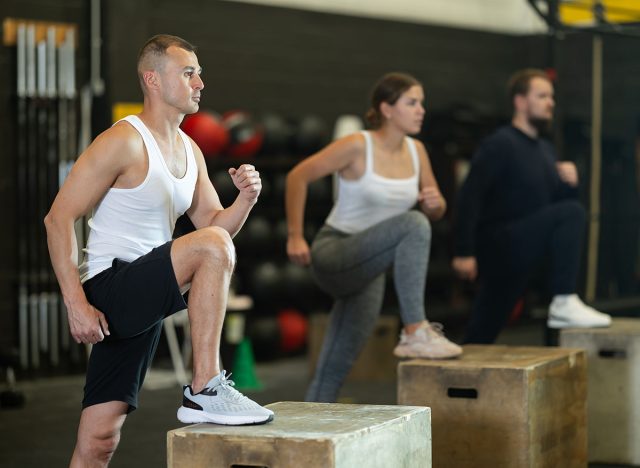
Step-ups are so effective because they mimic stair climbing without the injury risk. Plus, they’re a fantastic way to strengthen the legs while improving balance.
Mohr instructs, “Use a step or sturdy box. Step one foot up, then bring the other foot up to meet it. Step down and repeat as you alternate legs. Place the step adjacent to a wall or something you can use for support and balance, if needed. This is great for leg strength, balance, and coordination. Start with 3 sets of around 10 reps per leg and keep your reps even.”
How to do it:
- Stand facing a sturdy step, bench, or platform.
- Step up with your right foot, pressing through your heel.
- Bring your left foot up to meet your right.
- Step down with your right foot, then your left.
- Alternate the lead leg each time.
Sets & Reps: 3 sets of 10 reps per leg.
Tip: Start with a lower step and increase the height as your strength increases.
Looking for more easy ways to lose fat? Here’s How Long Your Walking Workout Should Be To Shrink Belly Fat.